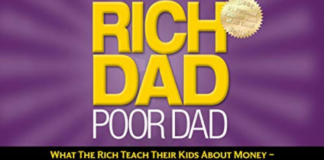1.Spend 10 minutes planning the essay.Before you start writing, take no more than 10 minutes to create an outline for your essay. This may seem like a big chunk of valuable time, but it will save you from having to rewrite or restructure your essay once you start writing.
2.Study the essay question. The essay will likely be directed by a question or a prompt, like a quote, with a question. It’s important that you read the question carefully and understand what it is asking of you.
For example, you may get a prompt in the form of quotation: “Time has a doomsday book, on whose pages he is continually recording illustrious names. But as often as a new name is written there, an old one disappears. Only a few stand in illuminated characters never to be effaced.” Henry Wadsworth Longfellow.
You may then receive a question attached to the prompt: “Are there some heroes who will be remembered forever? Or are all heroes doomed to be forgotten one day?” Plan your response, and then write an essay to explain your views on this issue. Be sure to support your position with specific points and examples. You may use personal examples or examples from your reading, observations, or, knowledge of subjects such as history, literature, science.
Brainstorm your thesis statement. A thesis statement will convey to your reader the points or arguments you are going to make in your paper. It acts a road map for your paper and should answer the question, “What is this paper about?” It should take a stand and announce your position towards the topic.
For example, you may brainstorm the Longfellow quote/question by thinking of personal examples of heroes who are remembered or forgotten, such as family members, friends, teachers, or peers who have acted as heroes to you or to others. Or you may focus on a historical figure who seems to be a forgotten hero or a decorated hero.
This essay question is asking for two sides of the discussion, the forgotten hero and the remembered hero. Your thesis should discuss both sides and choose one side to argue for or against.
You may choose to spotlight a historical figure who encountered opposition and challenges in her life, such as the suffragette Susan B. Anthony. Anthony worked tirelessly for decades to get the government to recognize women’s right to vote, and was often derided by the government and by individuals within her own organization. She is a good example of a hero who was not recognized as a trailblazer until late in her life, though she is now remembered as a heroine in history. Try to refer back to the quotation in the essay prompt in your thesis, if possible, to show you have read the entire question.
A possible thesis statement could be: “Though Longfellow argues that names, or heroes, may be forgotten over time, one historical figure, Susan B. Anthony, was derided in her lifetime for her beliefs but is now remembered as a heroine of her time.”
Create an outline. Make a rough outline of your five paragraph essay:
Introduction: Your beginning paragraph should contain an engaging first sentence and your thesis statement. Some writers find it easier to write create a temporary introduction and revise it once they are finished with the essay. This will ensure the introduction is cohesive with the rest of the essay.
Body paragraph 1-3: Each paragraph should discuss one major point of your thesis, with at least one supporting example.
Conclusion: This paragraph should summarize your main argument and restate your thesis. You may also want to include last thoughts around the essay question.
Take 15 minutes to write the essay.Now that you have your thesis statement and your outline, focus on composing content for each part of the essay.
Try to spend two to three minutes on each body paragraph. Then, take three minutes on your conclusion paragraph and go back to your introduction. Spend the last three minutes revising your introduction so it matches the tone and perspective of the rest of your essay.
Use a hook in your introduction. There are several possible hooks you can use in your essay to draw your reader in.
An interesting or surprising example: This could be a personal experience or a key moment in the life of the historical figure you are discussing in your essay. For example, you may discuss Anthony’s childhood as a Quaker and her later adoption of more casual dress and growing interest in social reform at the age of 26.
A provocative quotation: This could be from a source you used for your essay or one that feels relevant to your topic. For example, you may use a well known quote from Anthony, such as: “Cautious, careful people, always casting about to preserve their reputation and social standing, never can bring about a reform. Those who are really in earnest must be willing to be anything or nothing in the world’s estimation, and publicly and privately, in season and out, avow their sympathy with despised and persecuted ideas and their advocates, and bear the consequences.”
A vivid anecdote: An anecdote is a very short story that carries moral or symbolic weight. Think of an anecdote that might be a poetic or powerful way to start your essay.
A thought provoking question: create a question that will get your reader thinking and engaged in your topic. For example: “Did you ever wonder how women received the right to vote in the United States?”
Summarize your thoughts in your conclusion. Make your conclusion clear and to the point. Avoid introducing new ideas or arguments in your conclusion. Instead, restate your thesis and your main points.
For example, you may restate your thesis: “Throughout her life, Susan B. Anthony’s sacrificed her time, energy, and personal livelihood to advocate for women’s rights, proving that though many heroes may be forgotten, their actions will live on in history.”










